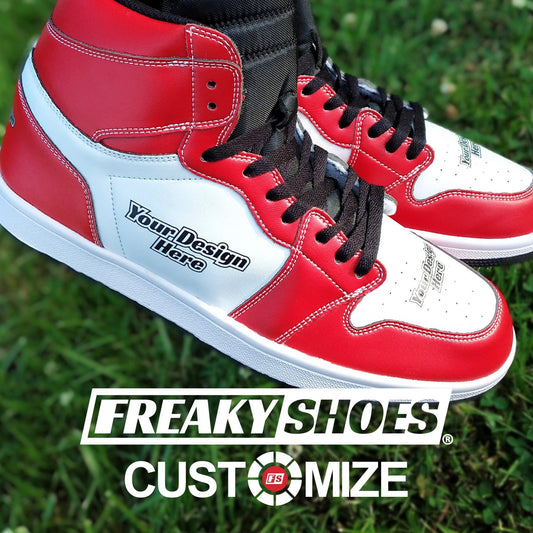Looking for the easiest ways to fix shoe soles? Well, let us tell you - With the right materials and steps, you can repair any sole at home.
We’ve been in the footwear industry for years and have tested almost every repair method there is. Now, we’re sharing the simplest ways to do it without costing much.
Stick to the end.
Key Takeaways
Let’s now read the details. We are discussing each shoe one by one.
How to Fix a Boot Sole? Super Easy Steps

We’ve found that the best way to fix a boot or shoe sole is using a commercially manufactured shoe repair. It's usually permanent, waterproof, flexible, and abrasion-resistant.
Here's how you can do it:
Step 1: Gather Your Supplies
First, gather all the things you will need to fix the sole. Doing this will make the rest of the steps easy for you.
You will need:
|
Supplies |
Purpose |
|
Sandpaper or emery board |
Roughen the sole surface for better adhesion |
|
Brush |
Clean and prepare the sole surface |
|
Isopropyl alcohol |
Remove dirt and oils from the sole |
|
Aquaseal adhesive |
Bond and seal the sole |
|
Clear tape |
Hold parts in place while the adhesive dries |
|
Rubber bands or clamps |
Secure the repair during drying |
Step 2: Prepare the Damaged Area
After you collect the above-mentioned supplies, the next thing to do is to clean the area on your shoe or boot where you see the damage. We suggest using a brush or cotton ball to remove any debris and loose particles.
Wondering why we should clean it? Well, it makes sure nothing gets in the way when you apply the glue.
Step 3: Scuff the Surface
Next, take some sandpaper and scuff up the sole area that you will be gluing. In our experience, 60 grit works well. This step is important because it roughens the surface, which ultimately makes it easier for the adhesive to stick.
But what if the area is tight? In this situation, we suggest removing the entire heel so that you can do the scuffing properly.
Step 4: Clean with Alcohol
After sanding, use isopropyl alcohol to clean all the contact points. This removes any residues and helps the glue adhere better.
Important Note: Make sure everything is clean and dry before moving on to the next step.
Step 5: Apply the Adhesive
Now, take your Aquaseal adhesive. Apply a generous amount around all the contact points. We suggest getting a “clear” adhesive. Why? Because it works for any color shoe.
In this step, spread the glue evenly to make sure it covers the entire surface.
Step 6: Reattach the Heel
Carefully wedge the heel back into place. Here, we suggest everyone ensure that any cushions or inner parts must be properly aligned.
Also, let us tell you that this step requires patience to make sure everything fits perfectly.
Step 7: Secure the Heel
Once the heel is in place, we suggest using rubber bands or clamps to hold it tightly together. In some cases, people face an issue here. The heel doesn’t grab at the front or back.
If you also notice this, don’t get worried. Just add more clamps to ensure it is tightly secured.
Some people also get worried that they will damage the shoe. It’s understandable. If you want to do this step more carefully, we suggest using craft sticks to distribute the pressure evenly.
Step 8: Let It Cure
Now, it's a waiting game. The manufacturer recommends letting the glue cure for 24 to 48 hours. If you want to be extra careful, you can wait up to 66 to 72 hours to ensure the glue has fully set.
Step 9: Check and Trim
After that time, you can remove the rubber bands or clamps. Here, you should also check the repair job. How?
Well, what we do is to flex the shoe or boot to see if the glue is holding well. If there are any excess glue bubbles, you can trim them off with a razor blade.
That’s it.
Now, you can easily fix the soles of your favorite shoes and boots at home. In our opinion, it's a cost-effective way to ensure your footwear stays good for a long time.
How to Fix Sneaker Sole? (The Best Method That Works Every Time)

If you want to fix sneaker soles, then note that the process is a little different than other types of shoes. But the good thing is - the process is straightforward.
Here’s what to do:
Step 1: Gather Your Supplies
Collecting the supplies in advance will save you some time, which is why we always recommend it. Don’t worry; this method does not require any expensive or unusual material.
You will need:
|
Supplies |
Purpose |
|
Shoe glue |
Bond and seal the sole |
|
Masking tape (3/4 inch) |
Hold parts in place while the adhesive dries |
|
Pliers |
Remove old adhesive and help with precise placement |
|
Toothpick |
Apply glue to small or hard-to-reach areas |
|
Knife or sandpaper |
Roughen the surface for better adhesion |
Step 2: Prepare the Shoe
First, open the sneaker as far as you can and make sure the surfaces are clean. Remove any dirt to ensure the glue sticks well. Here, you can use a spare toothbrush. If you don’t have it, damp a cotton cloth and use it to get rid of any dirt.
No matter what you use, we suggest being gentle.
Step 3: Apply the Glue
In this step, squeeze the shoe glue into the areas where the sole is peeling. Be careful not to get it on your skin. We’ve noted that it can cause irritation to some people.
That is why we always suggest going to a sunny or well-lighted room to perform this step.
If you want to be safer, then we suggest using a toothpick to spread the glue evenly between the two surfaces.
Step 4: Use Pliers for Tight Spots
We know that it can get difficult if there are tight spots. But worry not. You can deal with them easily. Just hold the shoe open with a pair of pliers.
Then, you can squeeze some glue down into those areas and use the toothpick to spread it.
Step 5: Secure with Masking Tape
Now, you should take a piece of masking tape and press the shoe down. Pull the tape tight and attach it to the top of the shoe.
Repeat this process a few times to ensure the sole is held firmly in place.
Step 6: Adjust the Tape
You can always tighten the tape even after it's applied. In our experience, adding a few more pieces of tape for extra strength is always a good idea.
Step 7: Let It Cure
Leave the shoe to sit for about 24 hours to let the glue set. For better results, you can leave it for up to two days.
Step 8: Remove the Tape
After the curing time, carefully remove the masking tape from the shoe. If you may notice some excess glue, simply use a knife to gently cut it off. But after doing this, use sandpaper to smooth it out.
Step 9: Check and Reapply if Needed
Lastly, check the repair. Here, we suggest looking for two things:
- Ensure it looks good
- The sole is secure.
If you still notice peeling, reapply the glue and tape as needed.
Now, you can easily fix your sneaker’s sole at home.
How to Fix Leather Shoe Sole? (Step by Step Guide)
Leather shoes are usually more expensive than others. If their soles get damaged, not all of us can afford to throw them away and buy a new one. Luckily, fixing the sole of your leather shoes can save you money.
However, the process is a little different because you will be using leather-specific materials here.
Follow these simple steps to repair your leather shoe soles at home.
Step 1: Gather Your Materials
Before starting, make sure you have everything you need:
|
Material |
Purpose |
|
Leather Glue |
Adhesive for bonding leather |
|
Sandpaper |
Roughening surfaces for better adhesion |
|
Utility Knife |
Cutting and trimming the sole |
|
Hammer |
Securing nails/tacks and flattening the sole |
|
Shoe Polish (for leather) |
Finishing and color-matching |
|
Soft Brush (suitable for leather) |
Applying glue and polish |
|
Clamps |
Holding the sole in place while drying |
|
Ruler/Measuring Tape |
Ensuring precise cuts and alignment |
Step 2: Clean the Soles
Start by cleaning the leather soles thoroughly. Use a damp cloth and carefully wipe away any dirt, dust, or debris. You now already know that it's crucial to have a clean surface for the adhesive to bond properly.
Important Point: Let the soles dry completely before moving on to the next step.
Step 3: Sand the Surfaces
In this step, lightly sand both the sole and the bottom of the shoe. This creates a rough texture, which is super important here as it will help the glue adhere better. Be gentle to avoid damaging the leather.
After sanding, it’s recommended to wipe away any residue with a clean cloth or brush.
Step 4: Apply the Adhesive
Now, apply a thin layer of leather glue to both surfaces. You can use a small brush or applicator to spread the glue.
Here, we suggest making sure to cover the entire area (that will be reattached).
Note: Follow the manufacturer's instructions for the glue you are using, as drying times can vary.
Step 5: Press the Soles Together
In this step, carefully align the sole with the bottom of the shoe and press them together firmly. Apply even pressure across the entire sole to ensure a strong bond.
Here, you can also use clamps or heavy objects to hold the sole in place while the glue sets. But ensure one thing - Sole must be properly aligned before applying pressure.
Step 6: Allow the Glue to Cure
In step six, let the adhesive cure for the recommended amount of time, usually 24 to 48 hours. We always tell people to avoid using shoes during this period. The reason? To allow the glue to set properly.
Patience is key to ensuring a durable repair.
Step 7: Test the Bond
After the glue has fully cured, you should test the bond by gently flexing the sole.
- If it feels secure, your shoes are ready to wear.
- If the sole still feels loose, you may need to apply more adhesive and repeat the process.
In the end, let us tell you that you should regularly clean and condition your leather shoes to keep them in good condition and prevent future sole issues.
How to Fix Rubber Sole of Shoes? (Ultimate Guide)
Fixing a rubber sole can be easy if you follow the steps below. Here’s how you can do it:
Step 1: Gather Your Supplies
You will need:
|
Materials |
Purpose |
|
Rubber adhesive (specifically for shoes) |
To bond the rubber sole to the shoe securely |
|
Sandpaper (medium grit) |
To roughen the surface for better adhesive bonding |
|
Rubbing alcohol or acetone |
To clean the area and remove contaminants |
|
Clean cloth |
To apply the cleaning solution |
|
Heavy book or clamp |
To apply consistent pressure for a strong bond |
|
Rubber patch or piece of old rubber sole |
To cover the damaged area of the sole |
|
Painter's tape |
To protect surrounding areas from adhesive |
|
Small brush or applicator |
To apply the adhesive evenly |
|
Silicone caulk (clear) |
To create a flexible barrier and extra waterproofing |
|
Wax paper |
To smooth the silicone caulk |
|
Heat gun or hair dryer |
To activate the adhesive for better bonding |
|
Rubber roller (or a rolling pin) |
To press down the patch and remove air bubbles |
|
Sharp utility knife |
To trim excess material for a clean finish |
Step 2: Preparation
After collecting supplies, we need to make sure the damaged part of the rubber sole is clean. Take a clean cloth and dip it in rubbing alcohol or acetone. Use this to thoroughly clean the area around the damaged spot.
This step is crucial as it removes dirt, oils, and other contaminants that might interfere with the repair.
Next, we lightly sand the area of the sole that needs repairing. Use medium-grit sandpaper for this task.
Wondering why we do it? Well, sanding creates a rough surface, which helps the adhesive bond better to the rubber.
Step 3: Apply Painter's Tape
Now, we use painter's tape to cover the parts of the shoe around the damaged area. This ensures that the adhesive doesn’t spread. It makes our work neat and keeps the repair area focused.
Step 4: Create a Silicone Barrier
Before applying the adhesive, we use a small amount of clear silicone caulk around the edges of the damaged area. This creates a flexible barrier that helps the rubber adhesive hold better. On top of it, it adds extra waterproofing.
Place a piece of wax paper over the caulk and smooth it with your finger. Let it set for about 30 minutes. This step ensures two things:
- The silicone caulk is evenly applied
- Forms a good barrier.
Step 5: Apply the Adhesive
In this step, we apply an even layer of rubber adhesive to both the shoe sole and the rubber patch. You can use a slight or soft brush for this. Here, make sure the entire damaged area is covered with adhesive.
To make the adhesive bond stronger, we use a heat gun or hair dryer. However, it’s crucial to use them on a low setting as we just want to slightly warm the adhesive.
Step 6: Attach the Rubber Patch
Now, place the rubber patch over the damaged area. You can use a rubber roller or a rolling pin to press it down firmly. This ensures even pressure and removes any air bubbles.
To ensure the repair holds, we suggest using a heavy book or a clamp to apply consistent pressure to the repaired area. Then, leave it for at least 24 hours to allow the adhesive to cure fully.
Step 7: Final Touches
Lastly, remove the painter's tape and check the repair. Make sure the rubber sole is securely attached with no gaps or loose areas.
If any adhesive or silicone has squeezed out around the edges, carefully trim it away with a sharp utility knife. This step makes the repair look neat and clean.
Finally, lightly sand the repaired area to ensure a smooth and even surface.
That’s all about fixing rubber shoe soles!


















